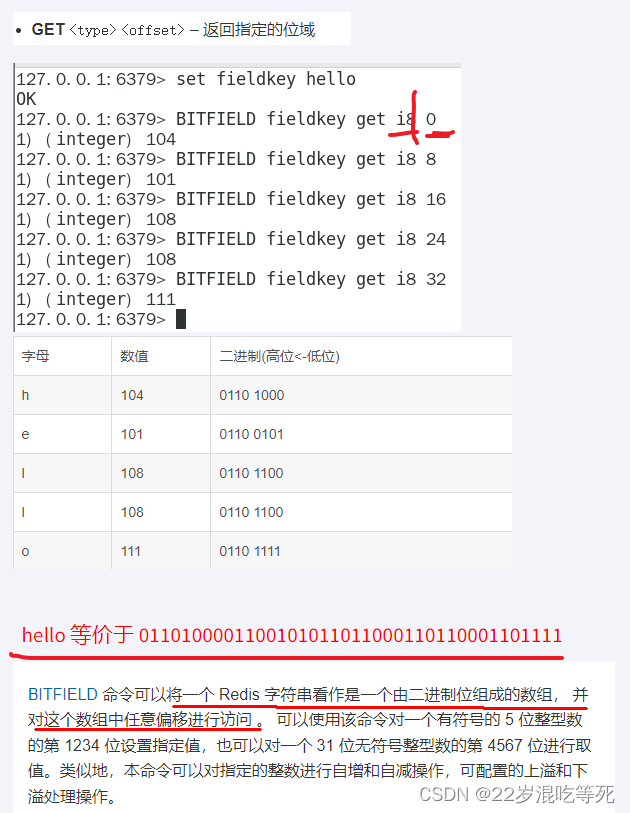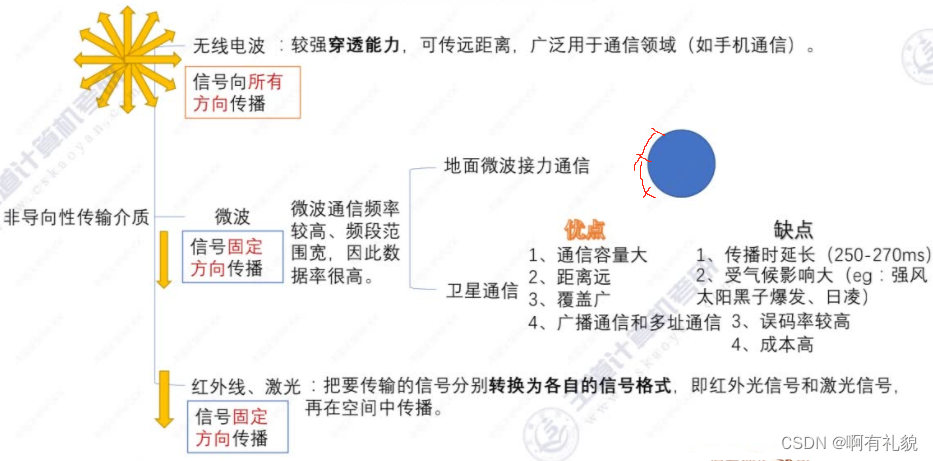挠性航天器姿态机动动力学模型及PD鲁棒控制
- 1挠性航天器姿态机动动力学模型
- 2挠性航天器姿态机动PD鲁棒控制
- 2.1 动力学模型及PD控制律
- 2.2仿真模型
- 2.3 控制程序
- 2.4 被控对象程序
- 2.5 绘图程序
- 2.6 结果
1挠性航天器姿态机动动力学模型
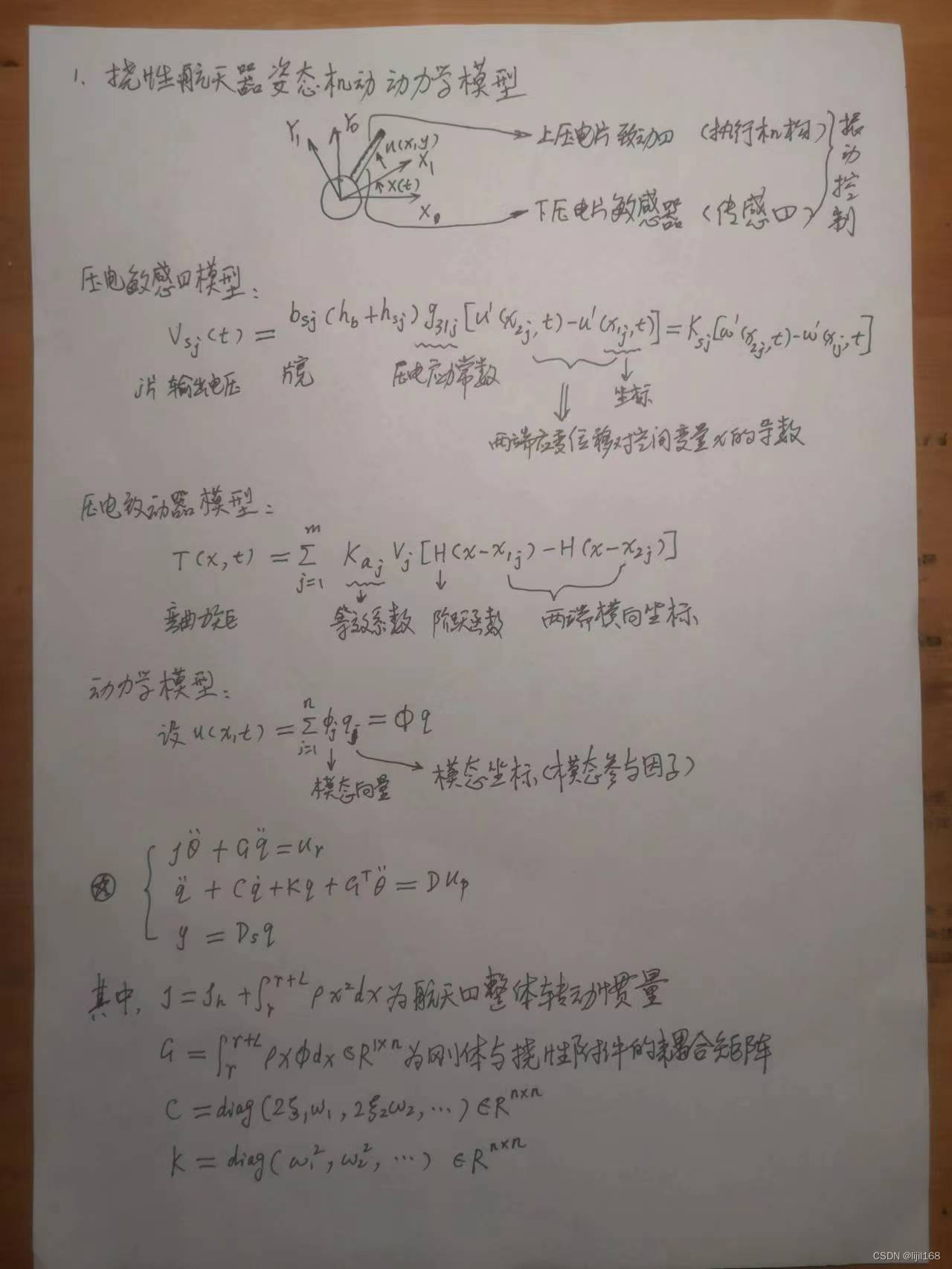

2挠性航天器姿态机动PD鲁棒控制
2.1 动力学模型及PD控制律
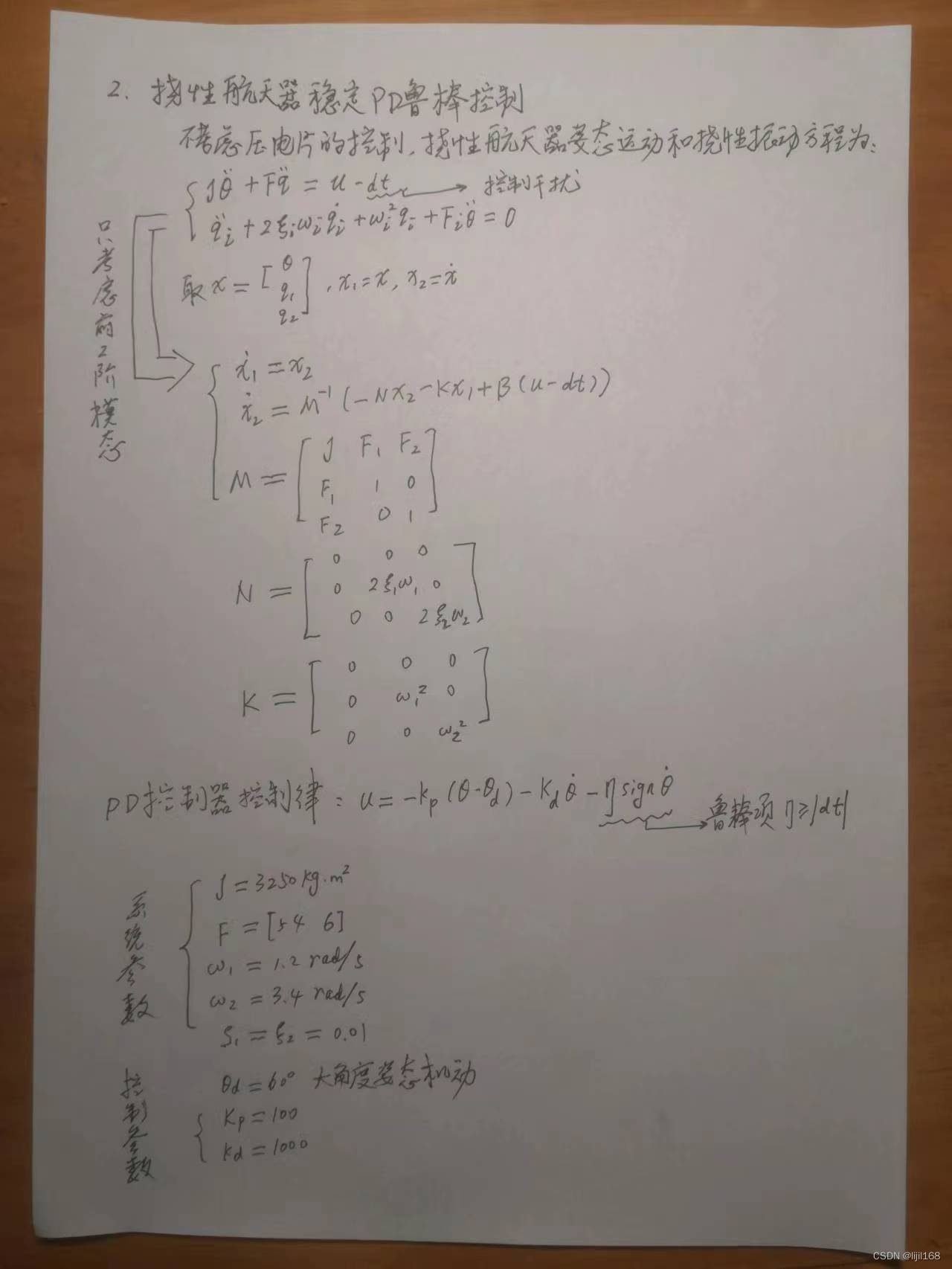
2.2仿真模型
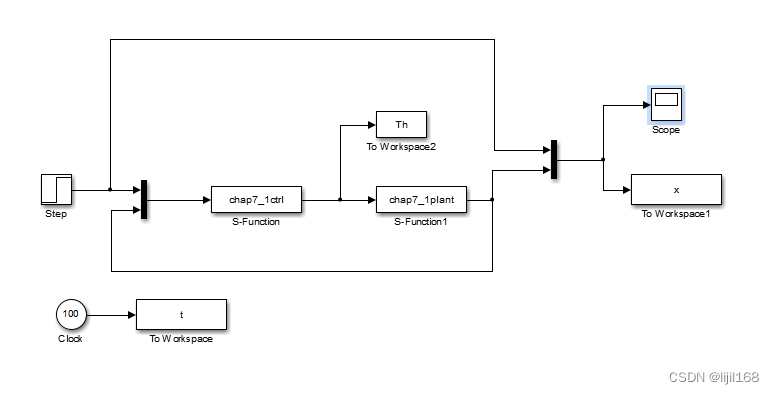
2.3 控制程序
function [sys,x0,str,ts,simStateCompliance] = chap7_1ctrl(t,x,u,flag)
%SFUNTMPL General MATLAB S-Function Template
% With MATLAB S-functions, you can define you own ordinary differential
% equations (ODEs), discrete system equations, and/or just about
% any type of algorithm to be used within a Simulink block diagram.
%
% The general form of an MATLAB S-function syntax is:
% [SYS,X0,STR,TS,SIMSTATECOMPLIANCE] = SFUNC(T,X,U,FLAG,P1,...,Pn)
%
% What is returned by SFUNC at a given point in time, T, depends on the
% value of the FLAG, the current state vector, X, and the current
% input vector, U.
%
% FLAG RESULT DESCRIPTION
% ----- ------ --------------------------------------------
% 0 [SIZES,X0,STR,TS] Initialization, return system sizes in SYS,
% initial state in X0, state ordering strings
% in STR, and sample times in TS.
% 1 DX Return continuous state derivatives in SYS.
% 2 DS Update discrete states SYS = X(n+1)
% 3 Y Return outputs in SYS.
% 4 TNEXT Return next time hit for variable step sample
% time in SYS.
% 5 Reserved for future (root finding).
% 9 [] Termination, perform any cleanup SYS=[].
%
%
% The state vectors, X and X0 consists of continuous states followed
% by discrete states.
%
% Optional parameters, P1,...,Pn can be provided to the S-function and
% used during any FLAG operation.
%
% When SFUNC is called with FLAG = 0, the following information
% should be returned:
%
% SYS(1) = Number of continuous states.
% SYS(2) = Number of discrete states.
% SYS(3) = Number of outputs.
% SYS(4) = Number of inputs.
% Any of the first four elements in SYS can be specified
% as -1 indicating that they are dynamically sized. The
% actual length for all other flags will be equal to the
% length of the input, U.
% SYS(5) = Reserved for root finding. Must be zero.
% SYS(6) = Direct feedthrough flag (1=yes, 0=no). The s-function
% has direct feedthrough if U is used during the FLAG=3
% call. Setting this to 0 is akin to making a promise that
% U will not be used during FLAG=3. If you break the promise
% then unpredictable results will occur.
% SYS(7) = Number of sample times. This is the number of rows in TS.
%
%
% X0 = Initial state conditions or [] if no states.
%
% STR = State ordering strings which is generally specified as [].
%
% TS = An m-by-2 matrix containing the sample time
% (period, offset) information. Where m = number of sample
% times. The ordering of the sample times must be:
%
% TS = [0 0, : Continuous sample time.
% 0 1, : Continuous, but fixed in minor step
% sample time.
% PERIOD OFFSET, : Discrete sample time where
% PERIOD > 0 & OFFSET < PERIOD.
% -2 0]; : Variable step discrete sample time
% where FLAG=4 is used to get time of
% next hit.
%
% There can be more than one sample time providing
% they are ordered such that they are monotonically
% increasing. Only the needed sample times should be
% specified in TS. When specifying more than one
% sample time, you must check for sample hits explicitly by
% seeing if
% abs(round((T-OFFSET)/PERIOD) - (T-OFFSET)/PERIOD)
% is within a specified tolerance, generally 1e-8. This
% tolerance is dependent upon your model's sampling times
% and simulation time.
%
% You can also specify that the sample time of the S-function
% is inherited from the driving block. For functions which
% change during minor steps, this is done by
% specifying SYS(7) = 1 and TS = [-1 0]. For functions which
% are held during minor steps, this is done by specifying
% SYS(7) = 1 and TS = [-1 1].
%
% SIMSTATECOMPLIANCE = Specifices how to handle this block when saving and
% restoring the complete simulation state of the
% model. The allowed values are: 'DefaultSimState',
% 'HasNoSimState' or 'DisallowSimState'. If this value
% is not speficified, then the block's compliance with
% simState feature is set to 'UknownSimState'.
% Copyright 1990-2010 The MathWorks, Inc.
% $Revision: 1.18.2.5 $
%
% The following outlines the general structure of an S-function.
%
switch flag,
%%%%%%%%%%%%%%%%%%
% Initialization %
%%%%%%%%%%%%%%%%%%
case 0,
[sys,x0,str,ts,simStateCompliance]=mdlInitializeSizes;
%%%%%%%%%%%%%%%
% Derivatives %
%%%%%%%%%%%%%%%
case 1,
%sys=mdlDerivatives(t,x,u);
sys=[];
%%%%%%%%%%
% Update %
%%%%%%%%%%
case 2,
%sys=mdlUpdate(t,x,u);
sys=[];
%%%%%%%%%%%
% Outputs %
%%%%%%%%%%%
case 3,
sys=mdlOutputs(t,x,u);
%%%%%%%%%%%%%%%%%%%%%%%
% GetTimeOfNextVarHit %
%%%%%%%%%%%%%%%%%%%%%%%
case 4,
%sys=mdlGetTimeOfNextVarHit(t,x,u);
sys=[];
%%%%%%%%%%%%%
% Terminate %
%%%%%%%%%%%%%
case 9,
%sys=mdlTerminate(t,x,u);
sys=[];
%%%%%%%%%%%%%%%%%%%%
% Unexpected flags %
%%%%%%%%%%%%%%%%%%%%
otherwise
DAStudio.error('Simulink:blocks:unhandledFlag', num2str(flag));
end
% end sfuntmpl
%
%=============================================================================
% mdlInitializeSizes
% Return the sizes, initial conditions, and sample times for the S-function.
%=============================================================================
%
function [sys,x0,str,ts,simStateCompliance]=mdlInitializeSizes
%
% call simsizes for a sizes structure, fill it in and convert it to a
% sizes array.
%
% Note that in this example, the values are hard coded. This is not a
% recommended practice as the characteristics of the block are typically
% defined by the S-function parameters.
%
sizes = simsizes;
sizes.NumContStates = 0;
sizes.NumDiscStates = 0;
sizes.NumOutputs = 1;
sizes.NumInputs = 7;
sizes.DirFeedthrough = 1;
sizes.NumSampleTimes = 1; % at least one sample time is needed
sys = simsizes(sizes);
%
% initialize the initial conditions
%
x0 = [];
%
% str is always an empty matrix
%
str = [];
%
% initialize the array of sample times
%
ts = [0 0];
% Specify the block simStateCompliance. The allowed values are:
% 'UnknownSimState', < The default setting; warn and assume DefaultSimState
% 'DefaultSimState', < Same sim state as a built-in block
% 'HasNoSimState', < No sim state
% 'DisallowSimState' < Error out when saving or restoring the model sim state
simStateCompliance = 'UnknownSimState';
% end mdlInitializeSizes
%
%=============================================================================
% mdlDerivatives
% Return the derivatives for the continuous states.
%=============================================================================
%
%function sys=mdlDerivatives(t,x,u)
%sys = [];
% end mdlDerivatives
%
%=============================================================================
% mdlOutputs
% Return the block outputs.
%=============================================================================
%
function sys=mdlOutputs(t,x,u)
thd=u(1);
th=u(2);
q1=u(3);
q2=u(4);
dth=u(5);
dq1=u(6);
dq2=u(7);
q=[q1 q2]';
dq=[dq1 dq2]';
e=th-thd;
kp=100;
kd=1000;
xite=4.0;
xite=0;
ut=-kp*e-kd*dth-xite*sign(dth);
sys = ut;
% end mdlOutputs
%
%=============================================================================
% mdlGetTimeOfNextVarHit
% Return the time of the next hit for this block. Note that the result is
% absolute time. Note that this function is only used when you specify a
% variable discrete-time sample time [-2 0] in the sample time array in
% mdlInitializeSizes.
%=============================================================================
2.4 被控对象程序
function [sys,x0,str,ts,simStateCompliance] = chap7_1plant(t,x,u,flag)
switch flag,
case 0,
[sys,x0,str,ts,simStateCompliance]=mdlInitializeSizes;
case 1,
sys=mdlDerivatives(t,x,u);
case 3,
sys=mdlOutputs(t,x,u);
case {2,4,9}
sys=[];
otherwise
DAStudio.error('Simulink:blocks:unhandledFlag', num2str(flag));
end
function [sys,x0,str,ts,simStateCompliance]=mdlInitializeSizes
sizes = simsizes;
sizes.NumContStates = 6;
sizes.NumDiscStates = 0;
sizes.NumOutputs = 6;
sizes.NumInputs = 1;
sizes.DirFeedthrough = 0;
sizes.NumSampleTimes = 1; % at least one sample time is needed
sys = simsizes(sizes);
x0 = [0 0 0 0 0 0];
str = [];
ts = [0 0];
% Specify the block simStateCompliance. The allowed values are:
% 'UnknownSimState', < The default setting; warn and assume DefaultSimState
% 'DefaultSimState', < Same sim state as a built-in block
% 'HasNoSimState', < No sim state
% 'DisallowSimState' < Error out when saving or restoring the model sim state
simStateCompliance = 'UnknownSimState';
function sys=mdlDerivatives(t,x,u)
J=3250;
F1=54;
F2=6;
w1=1.2;w2=3.4;
Ks1=0.01;Ks2=0.01;
M=[J F1 F2;F1 1 0;F2 0 1];
N=[0 0 0;0 2*Ks1*w1 0;0 0 2*Ks2*w2];
K=[0 0 0;0 w1^2 0;0 0 w2^2];
B=[1 0 0]';
dt=0*3*sin(t);
ut=u(1);
x1=[x(1) x(2) x(3)]';%th q1 q2
x2=[x(4) x(5) x(6)]';%dth dq1 dq2
dx1=x2;
dx2=inv(M)*(-N*x2-K*x1+B*(ut-dt));
sys(1)=dx1(1);
sys(2)=dx1(2);
sys(3)=dx1(3);
sys(4)=dx2(1);
sys(5)=dx2(2);
sys(6)=dx2(3);
function sys=mdlOutputs(t,x,u)
sys(1)=x(1);%th
sys(2)=x(2);%q1
sys(3)=x(3);%q2
sys(4)=x(4);%sth
sys(5)=x(5);%dq1
sys(6)=x(6);%dq2
2.5 绘图程序
close all;
figure(1);
subplot(211);
plot(t,x(:,1),'r',t,x(:,2),'b','linewidth',2);
xlabel('time(s)');ylabel('angle tracking');
legend('ideal angle','practical angle');
subplot(212);
plot(t,x(:,5),'b','linewidth',2);
xlabel('time(s)');ylabel('practical angle speed');
figure(2);
subplot(211);
plot(t,x(:,3),'r','linewidth',2);
xlabel('time(s)');ylabel('Mode 1');
subplot(212);
plot(t,x(:,4),'b','linewidth',2);
xlabel('time(s)');ylabel('Mode 2');
figure(3);
subplot(211);
plot(t,x(:,6),'r','linewidth',2);
xlabel('time(s)');ylabel('speed of Mode 1');
subplot(212);
plot(t,x(:,7),'b','linewidth',2);
xlabel('time(s)');ylabel('speed of Mode 2');
figure(4);
plot(t,Th(:,1),'r','linewidth',2);
xlabel('time(s)');ylabel('Th');
2.6 结果
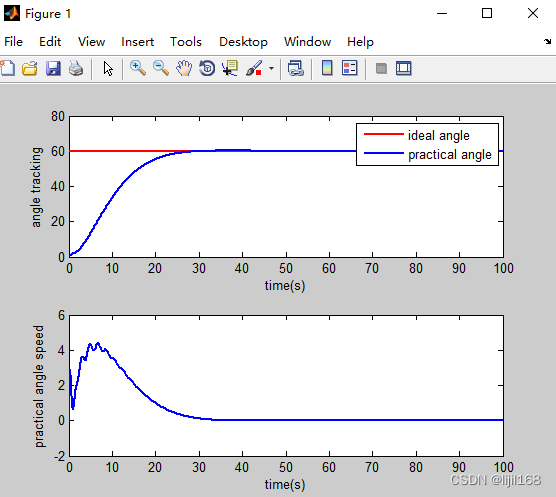
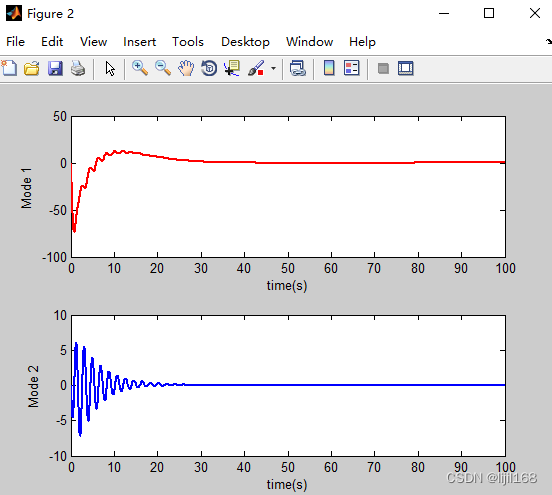
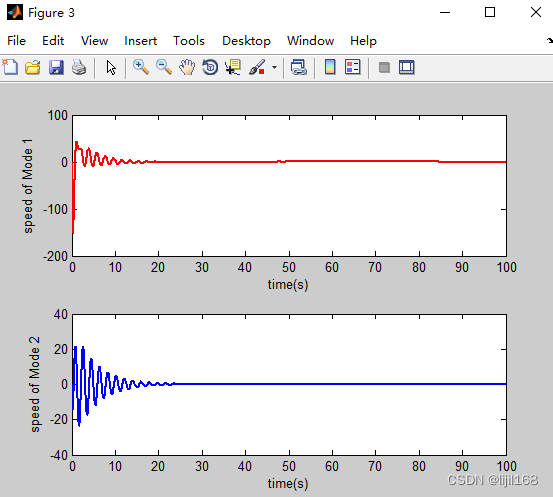
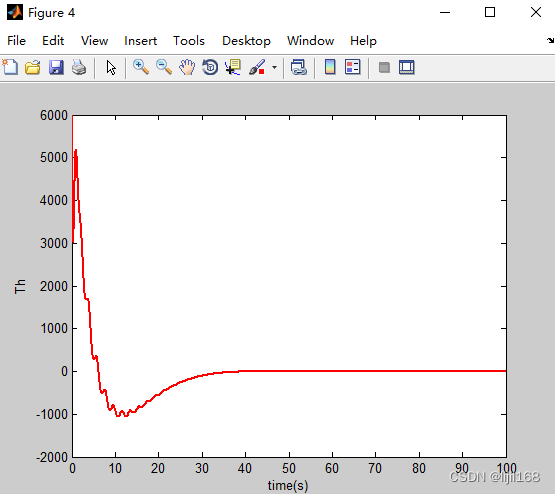





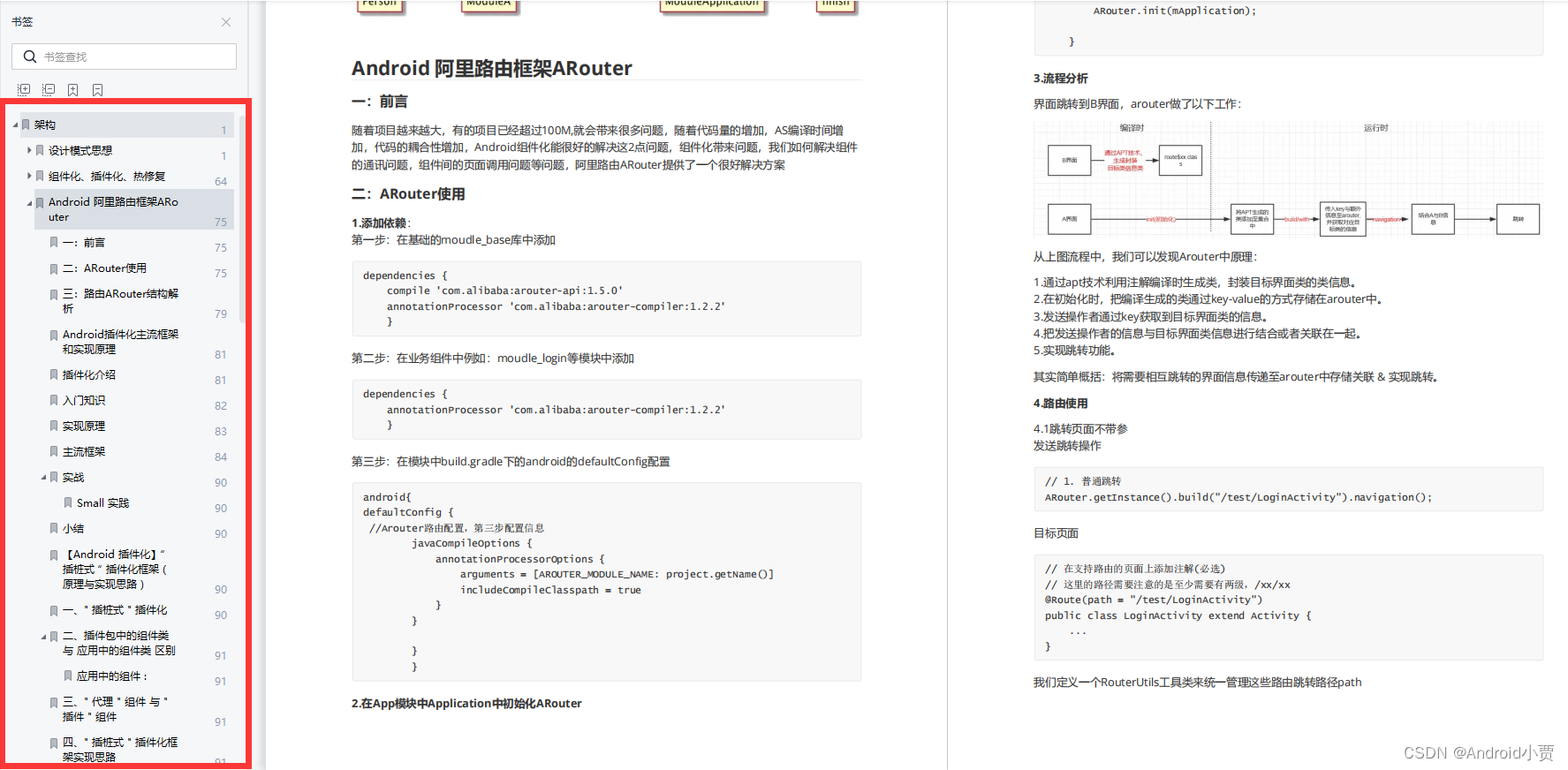


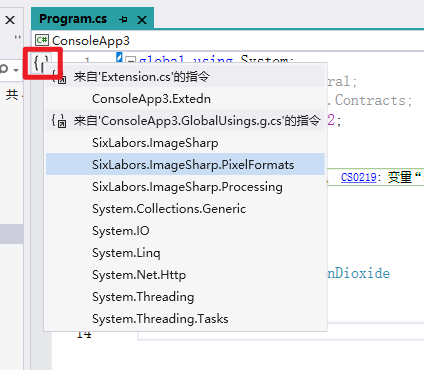


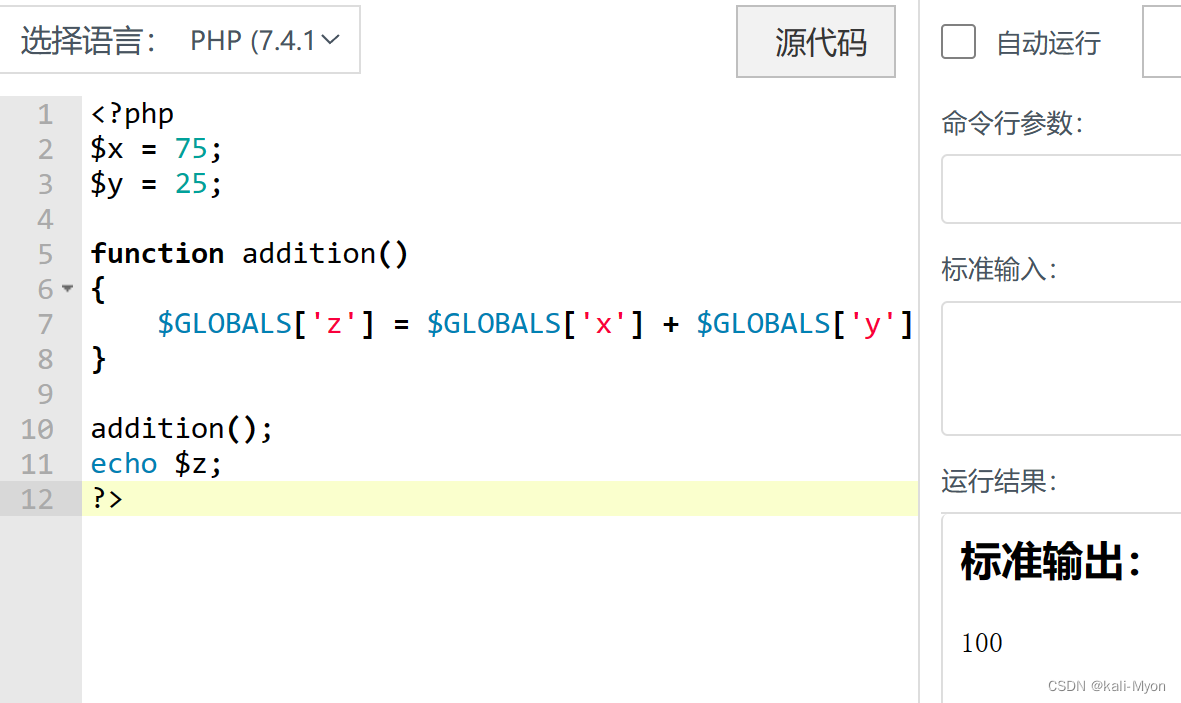
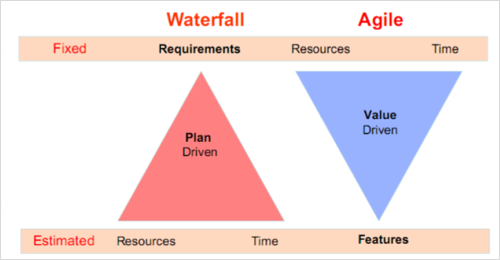
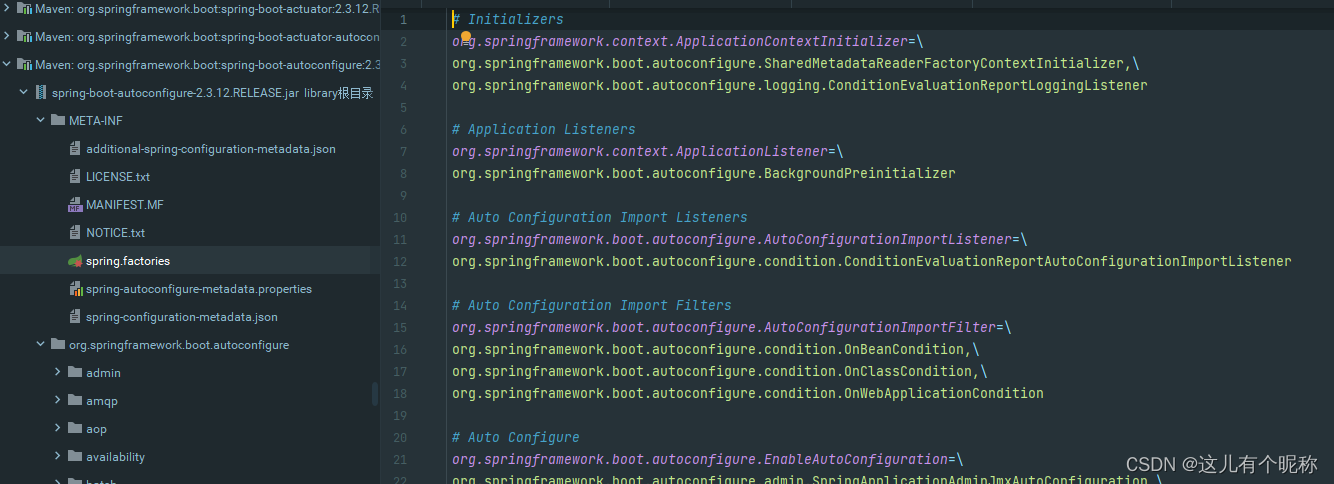
![[IAR][CC2642R1] IDE安装和环境搭建,CC2642的环境配置](https://img-blog.csdnimg.cn/8096d9797f4a4cada41add3c8fb19ef0.png)
